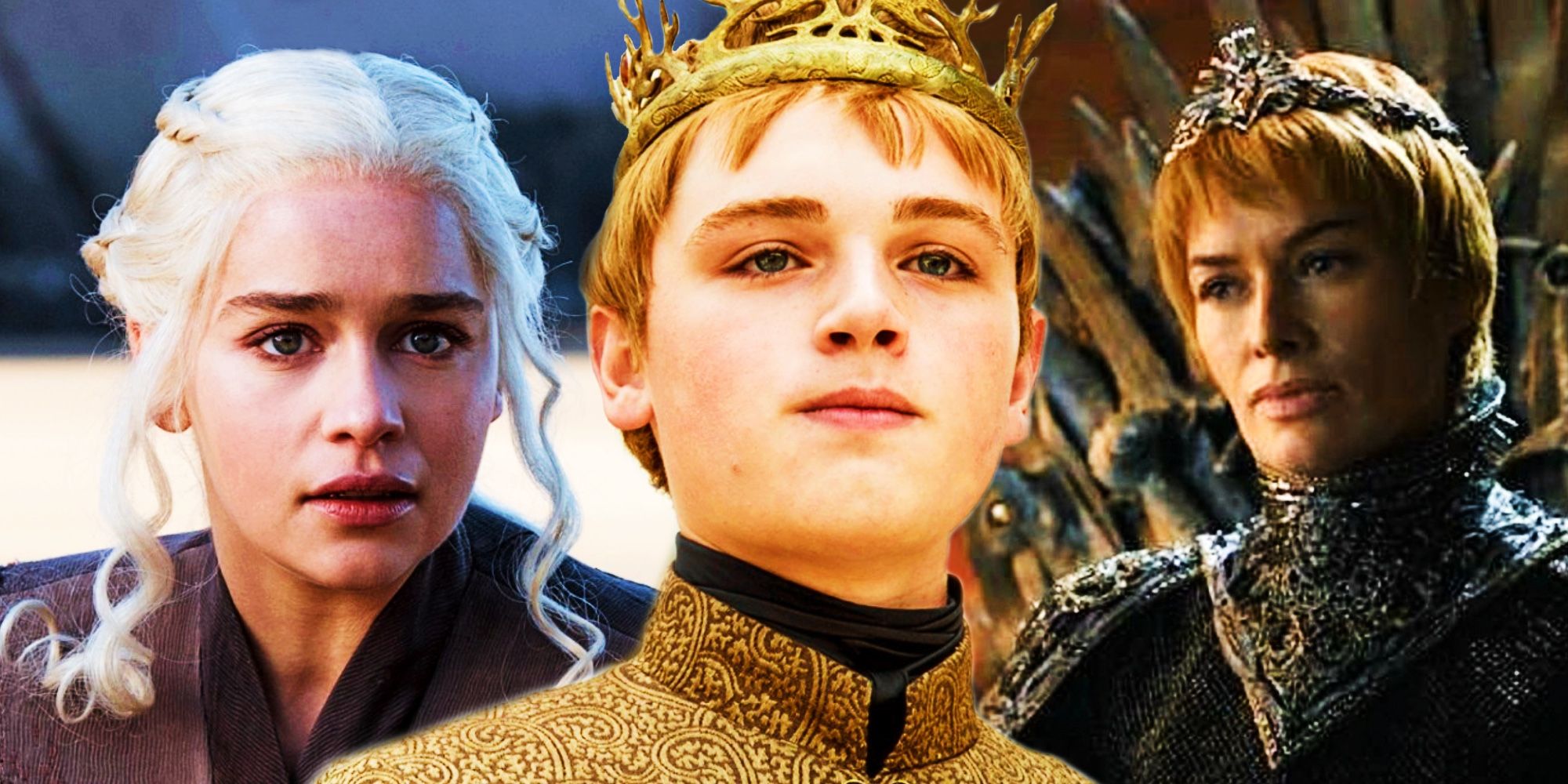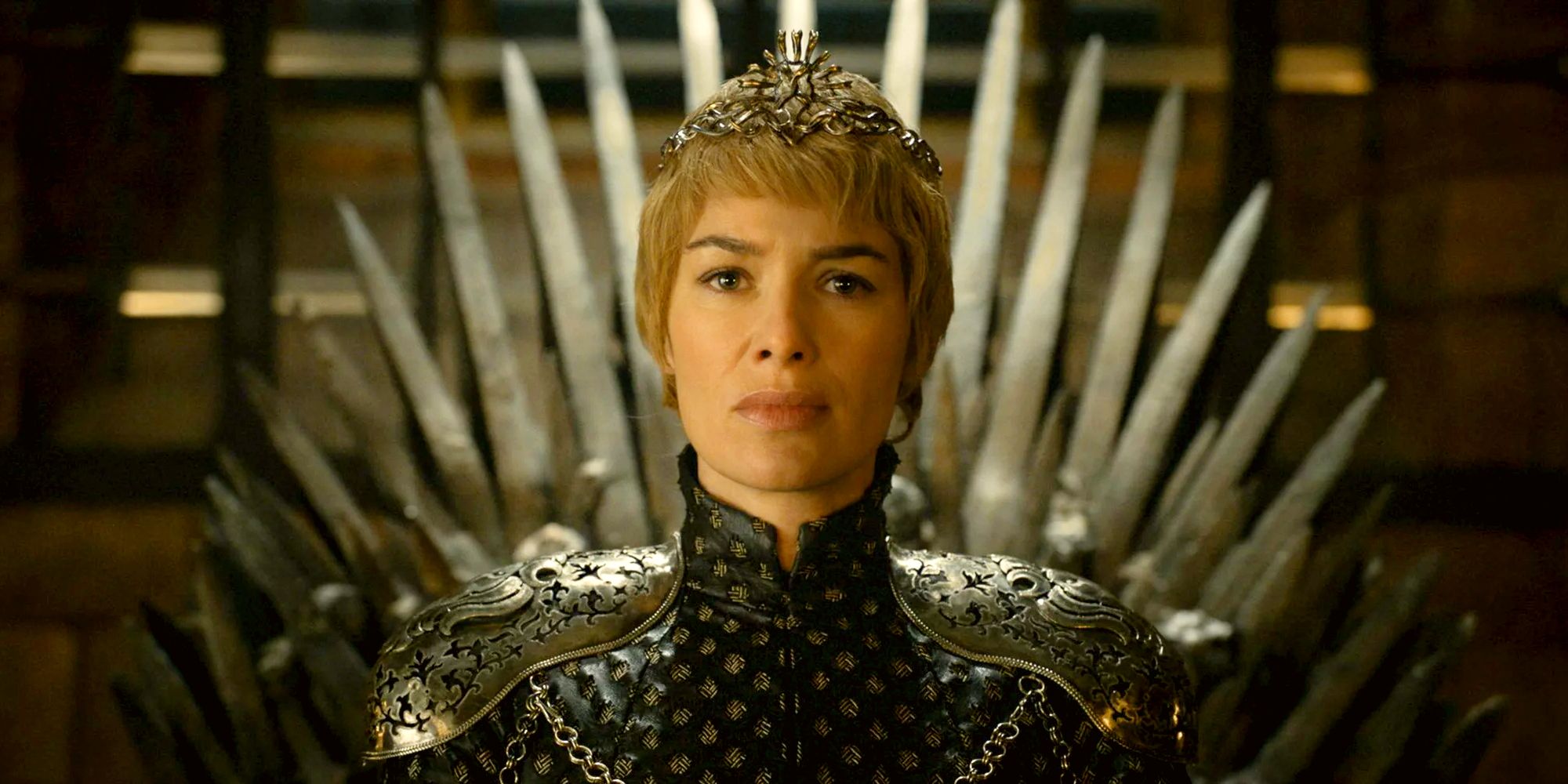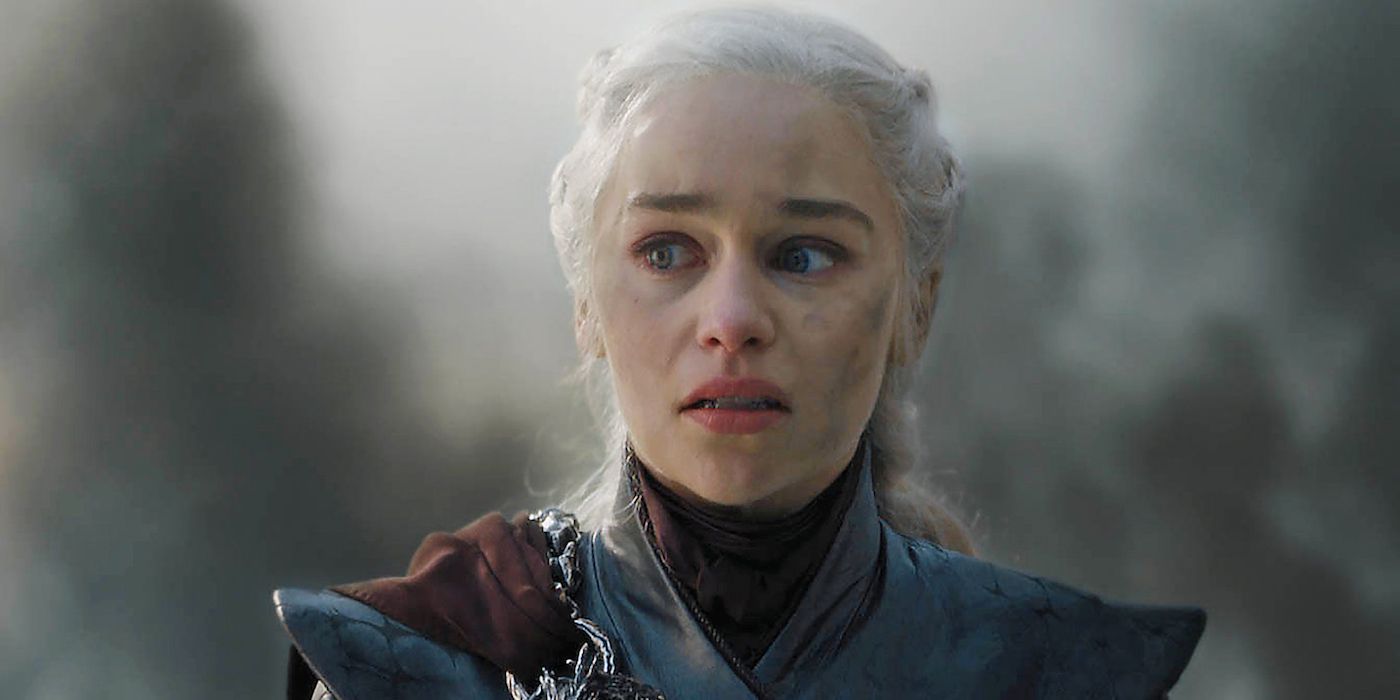GOT: Who Was Tommen’s True Heir To The Iron Throne (Was It Cersei)?

Cersei became Queen of Westeros after Tommen’s death in Game of Thrones season 6, but whether or not she was actually his heir to the Iron Throne is another matter. Part of the reason why the War of the Five Kings began in Game of Thrones’ timeline was due to the notion that Stannis Baratheon saw himself as the true heir to King Robert Baratheon because Joffrey, Tommen, and Myrcella were all actually Lannisters born from Cersei and Jaime’s incest. Nonetheless, Joffrey ascended the throne after Robert’s death, with Tommen following him thereafter. However, after Myrcella and Stannis' deaths, Tommen had no more direct heirs in the Baratheon line, leaving the rightful claims for his succession extremely complex.
After Tommen took his own life in the Game of Thrones season 6 finale, the Baratheon line had briefly ended. Had Stannis still been alive after Tommen’s suicide, it would have passed to him and then Shireen (had Stannis not sacrificed her), but every legal living Baratheon had died too soon. Quickly after King Tommen Baratheon's death, his mother Cersei Lannister was named the Queen of Westeros, thus upgrading herself from simply being known as the Queen Mother. Since Cersei had already primarily been ruling for her sons during their regencies, it wasn’t a massive change when she ascended the throne, but it did mean that she was all the more dangerous for the rest of the realm in terms of having absolute power.
Surprisingly, Game of Thrones never featured a council about who would be Tommen’s heir before his death aside from Myrcella, especially since the Baratheon line had dwindled to such a small size by then. Once King Tommen died, House Baratheon went extinct until King Robert’s bastard son Gendry was legitimized a few years later. Without any direct family members remaining in the Baratheon line, the path to discovering Tommen’s true heir to the Iron Throne meant tracing much further back through Game of Thrones’ family tree.

While Gendry was legitimized with the Baratheon name and made the Lord of Storm’s End in Game of Thrones season 8, he was in no position to be considered the heir to Tommen upon his season 6 death. For starters, Cersei never would have allowed it, with Robert Baratheon also never having acknowledged that Gendry was his child. Gendry was also absent from Game of Thrones seasons 4-6, so he wasn’t considered to be thrown into the ring by any Westerosi lords as of yet. Although Gendry was the last remaining member of the Baratheon bloodline upon Stannis Baratheon’s death, he wouldn’t have been considered a contender for Tommen’s heir unless he began an uprising with the massive support of high lords and ladies, which would have been unlikely due to his then-status as a bastard.

Rather than hold a Great Council, like that of the Great Council of Harrenhal in 101 AC, to decide who would succeed Tommen as King of Westeros, Cersei seized the throne herself as a usurper. Upon this moment, Cersei made history as the very first queen regnant in Westeros, as past Targaryen queens like House of the Dragon’s Rhaenyra ceased to be acknowledged as such. Just as Robert usurped the crown from House Targaryen's historic family in Robert’s Rebellion, Cersei claimed the throne through the right of conquest, with the disgraced Maester Qyburn officially crowning her as the ruling Queen. As such, Cersei wasn’t named queen due to being Tommen’s mother or next of kin, as the rules of lineage follow that the Iron Throne’s heir must come directly through the Baratheon line. However, once Cersei usurped the throne and was crowned Queen, the power of the Iron Throne shifted over the Lannisters, where it had really been since Robert’s death.

Cersei didn't win the Iron Throne through a claim of inheritance, but another queen already after the crown could have still used her Baratheon connections as a rightful claim. Robert, Stannis, Renly, and the next generation of Baratheons had all died upon Tommen and Myrcella's Game of Thrones deaths, meaning his true heir lay back in the family’s lineage. Even going back several generations, the majority of the known bloodline connected to House Baratheon established in Game of Thrones or A Song of Ice and Fire had died, with the answer to Tommen's succession lying closer to the marriages of Roberts’ Baratheon ancestors.
Tracing back through the Baratheon bloodline, the closest heir to the Iron Throne stemmed from the marriage of Lyonel Baratheon (Robert’s grandfather) to Rhaelle Targaryen, the daughter of King Aegon V Targaryen. While lineage to the throne typically doesn’t work in terms of who married into the family, King Robert Baratheon’s claim to the Iron Throne was validated to the realm by maesters relating that his grandmother was a Targaryen, thus supporting that he had a blood claim. If Robert’s usurpation of the crown was largely supported by his grandmother being Rhaelle Targaryen, it was inevitable that Rhaelle’s niece (in Game of Thrones canon), Daenerys, could also share such a claim through the Baratheon line. Time and again, the Baratheon family line went back to its marriages to Targaryens when searching for the next heir with the best claim, thus pointing to Daenerys Targaryen. While Jon Snow (Aegon Targaryen) would also have a claim, the realm knew nothing about Jon's true Targaryen parentage until Game of Thrones season 8, long after Cersei had seized the throne.
While it was more than likely that many other Baratheon heirs from six generations up the line could have claimed their right to the Iron Throne after Tommen’s death, Game of Thrones largely ignored many of the smaller houses who married into these families long ago. As such, it’s still unclear which descendants of Baratheon women who married into other families are actually canon in the HBO series. So, by the time Tommen died at the end of Game of Thrones season 6, Daenerys Targaryen still had the strongest claim due to being the first cousin-once-removed of Robert Baratheon through Rhaelle Baratheon (neé Targaryen). When Daenerys took the throne back from Cersei in Game of Thrones season 8, she was technically doing so with multiple strong birthright claims.
from ScreenRant - Feed https://ift.tt/05ru1f9
via Whole story

Post a Comment